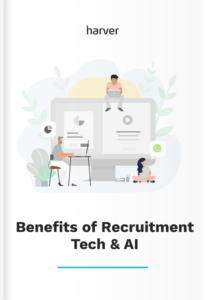Where teams of software developers are concerned, Agile has been a popular way of working for years. But, fast forward today and more and more industries and teams are discovering the benefits and adopting the principles of Agile working, including recruitment and talent acquisition.
So, what exactly is agile recruiting? How does agile recruiting work, how does it benefit you and how can you make the best of it? Continue reading to find out the answer to these very questions!
What’s in?
What’s agile recruiting?
First developed in 2001 by a team of software developers, they wrote the Agile Manifesto with the following goal in mind: To be more productive and streamlined in their work by eradicating needless bureaucracy and pointless meetings.
Atlassian defines Agile as follows:
“Agile is an iterative approach to project management and software development that helps teams deliver value to their customers faster and with fewer headaches. Instead of betting everything on a “big bang” launch, an agile team delivers work in small, but consumable, increments. Requirements, plans, and results are evaluated continuously so teams have a natural mechanism for responding to change quickly.”
Sounds good, right? It’s hardly surprising their ideas were soon embraced by other industries and departments, including HR.
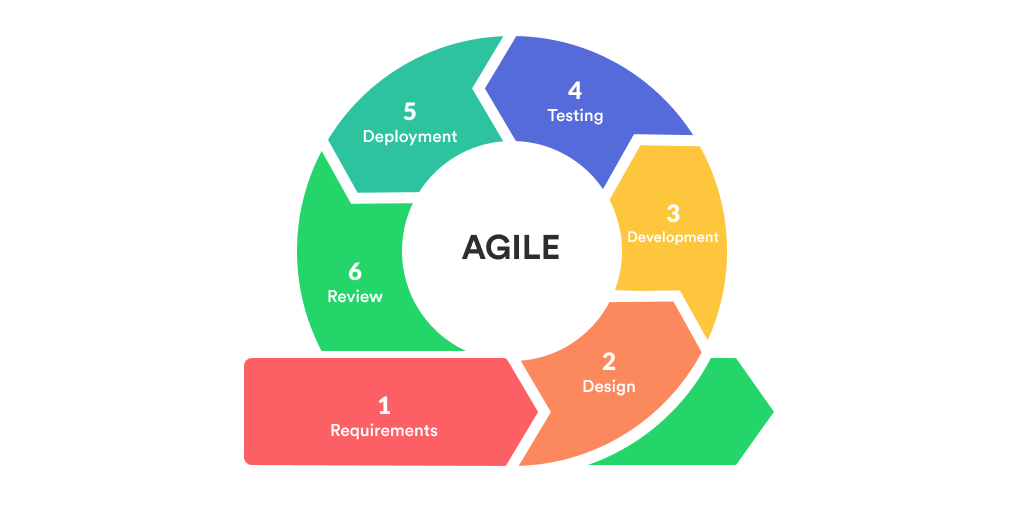
This is what Agile looks like in software development. Imagine it as a loop – after the deployment and review, the process starts again.
So, how does the Agile approach aid recruiters, specifically?
Agile recruiting furnishes recruitment teams and hiring managers with greater flexibility and efficiency, which is achieved by breaking projects into smaller tasks, prioritization, and frequent feedback.
Your software stack should support the agile recruiting. It should provide all the necessary tools to streamline operations as well as provide access to analytics reports. Using this information, you can enhance your recruitment strategies and optimize your team’s performance for maximum productivity.
By embracing agile recruitment principles, hopefully, your recruitment processes will be faster and more efficient (at least, in the long run). You should also see an improvement in your communication, both internal and external.
Put into practice, agile recruiting involves breaking down larger recruitment-related tasks into manageable, bitesize pieces that are completed within a set period of time. By organizing work this way, it’s easier to set more definite recruitment goals and deadlines.
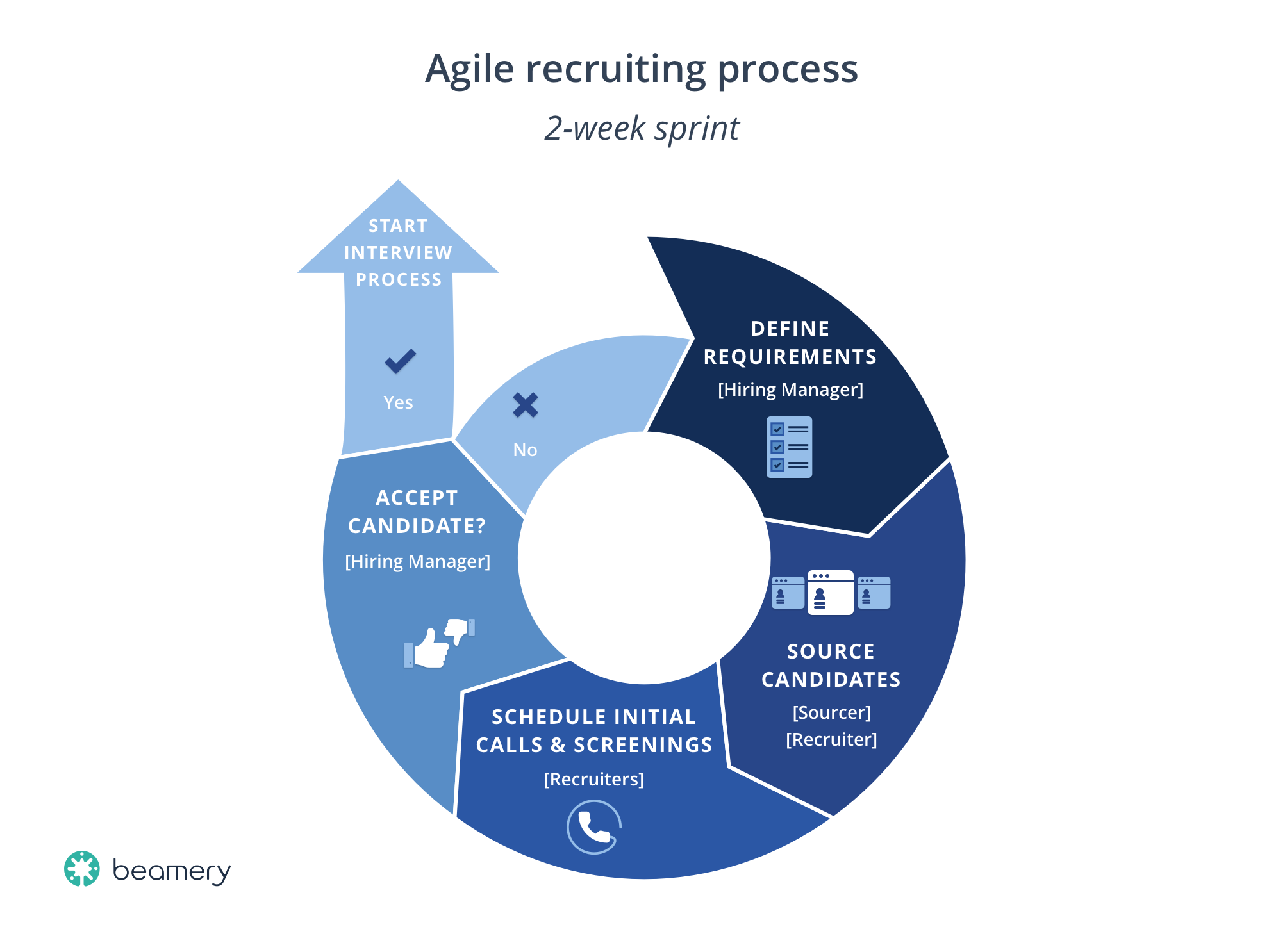
This is how Beamery reimagines the agile process for recruiting.
At the time of writing, we’re reeling from the COVID-19 pandemic. During this turbulent period, where industries are facing both long- and short-term challenges, an agile approach to recruitment, enabling organizations to adjust to the changing situation and quickly adapt their activities, is increasingly essential. Businesses now more than ever want to organize themselves better and save money too.
This is where agile recruiting approach might just be the solution.
The benefits of agile recruiting
There are multiple benefits to adopting agile recruitment practices, here’s just a few:
Frequent feedback: Agile recruitment allows you to make improvements on the go to enhance team collaboration. This somewhat of a contrast to traditional methods where hiring managers (usually) didn’t see which candidates had been approved for an interview until the end of the sourcing and screening period. By then, it’s too late to change anything if the hiring manager hates every candidate.
Conversely, agile recruiting enables you to request, collect, and action any feedback hiring managers have – at any time. So, if your hiring manager hasn’t been clear about their needs/you’ve misunderstood/the goalposts have changed, all isn’t lost. You can quickly refocus your approach, not wasting any time or money.
Greater flexibility: By taking an agile approach, you’re better equipped to quickly adjust workflows, should recruitment deadlines or requirements change.
Analytics: Continuous monitoring of your results helps you understand which recruitment methods work best for your organization and which don’t. You can also use this data to track where candidates drop out and at what stage in the recruitment funnel. This allows you to adjust your process on the go.
Improved productivity: Your team’s overall productivity should improve, as the agile methodology facilitates faster, more effective collaboration and communication. For example, all hiring team members could access a platform where they can methodically discuss each aspect of the recruitment process. From one convenient dashboard, team members can share candidate ratings, create team tasks, prioritize work, and so on, to ensure everyone’s on the same page!
Speed: Recruiters and candidates alike grumble about painfully slow and poorly communicated recruitment processes. But, with agile recruitment, this particular pain vanishes. Agile recruitment approach makes it easier to provide regular touchpoints with your candidates, which enables effective communication every step of the way. Primarily, these can be automated, so you don’t waste valuable time writing emails, which frees up your schedule for more important things…like securing high-quality hires.
Better hires and happier candidates: By collaborating with your hiring manager more efficiently, you’ll better understand their needs. Consequently, you’re in a better position to find and hire people who ‘gel’ with your organization and workplace culture.
This works both ways. When candidates are kept up to date at each step of the recruitment process, they’re happier too. Remember, a poor candidate experience will expose your brand to lousy online feedback, which could result in fewer candidates willing to work for you.
So, how can your team adopt an agile approach to recruitment? Let’s take a look:
Agile recruiting tips for you and your team
1. Gather your team
Having the right colleagues to work alongside you is essential. Everyone should understand their role within the team and their tasks.
One typical agile framework used by recruiters is Scrum, which entails working in so-called sprints. These are fixed time-boxes of a specific period during which tasks are carried out and completed. This works best with smaller groups, as team members are assigned specific roles.
In general, you should keep your agile recruiting team small, otherwise it might become ineffective. Ideal team size is between 3 and 9 people, excluding the Scrum Master and Product Owner.
An average recruitment Scrum team could comprise a Scrum Master, a Product Owner, and the Recruitment Team.
One example of a firm successfully using the Scrum method is GE. They’ve introduced a RaaS – Recruiting as a Service – model. These are its four key elements:
- A recruiting scrum team – a cross-functional team working within 2 to 5-week sprint cycles
- A scrum master – facilitating scrum and preventing interruptions
- A headcount owner – organizing hiring backlogs and setting priorities based on conversations with hiring managers
- Technology – connecting recruiters with candidates throughout the process, conduct technical assessments, share info, and address any backlogs.
2. Set your KPIs
Key performance indicators (KPIs) are essential to any professional recruitment process to evaluate its effectiveness. So, talk with your team and figure out which metrics you want to track – and how.
Below are a few examples of KPIs you could set:
- The ratio of candidates submitted to the hiring manager vs. the number of candidates chosen for an interview
- Job offer acceptance rate
- The number of candidates interviewed vs. the number of job offers
- Source of hire
- Cost per hire
- Time to hire
You can always alter your KPIs as you go along. By harvesting this data, you’ll be better positioned to assess areas that need improvement and make the necessary alterations to enhance your recruitment process.
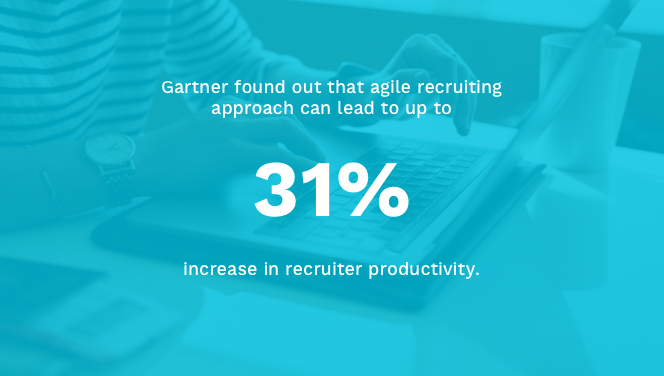
You can compare your KPIs before and after implementing the agile recruiting approach and track what results it leads to.
3. Break down projects into tasks
By breaking projects into tasks and sprints, you can determine which parts of a recruitment project can be allocated to specific team members. The same goes for setting timeframes for each of these projects and tasks.
This enables you to better assess which tasks to prioritize and which take the longest. This can be discussed in your sprint planning meetings.
You don’t need weekly meetings – biweekly or monthly is sufficient if you use software that encourages teams to efficiently collaborate. Just ensure you still factor in sessions where you can gather and discuss feedback and brainstorm. These discussions still play a valuable role in refining and enhancing your recruitment strategy!
Here’s an example of a sprint plan:
- Week 1: Source candidates and get feedback from the hiring manager
- Week 2: After feedback from the hiring manager during week 1, retarget candidate sourcing (if needs be), and reach out to applicants.
- Week 3: Screen candidates with phone interviews
- Week 4: Face-to-face/Remote interviews with hiring managers
This is a rough example, but you get the idea!
4. Visualize your progress
Use a Trello board or even a good old fashioned whiteboard with post-it notes. Sometimes, visualizing the overall project and its breakdown, allows the team to more clearly see both their own progress and the project as a whole.
Some teams adopt the Kanban method. This is a visual time management strategy based on the ‘board layout.’ The board’s split into segments, and each section represents a different stage of the project and the tasks within it. Kanban is the Japanese word for “signpost” and was first developed during the 1950s at Toyota to improve production. Since then, organizations all around the globe have adopted this method.
Take Deezer as an example. They noticed their recruitment process wasn’t as seamless between departments as they’d like – with too much back and forth. Overall, they realized their candidate experience was pretty weak. Deezer’s solution was for collaborating departments to get together and visualize their recruitment project via a Kanban board. That seemed to work for them!

This is what your Kanban recruitment board can look like. As you progress through the sprint, you move the cards (candidates) from one stage to another.
5. Hold regular standups
Don’t worry, these aren’t long-winded meetings. Instead, they’re daily or weekly standup meetings or team huddles, which work best when they’re short and focus on these questions:
- What did I do yesterday (or since the last meeting)?
- What am I doing today and this week?
- Are there any challenges or potential delays (for each team member)?
Staying laser-focused means standups shouldn’t be longer than 15 minutes. However, they still provide an opportunity for team members to pitch in, help one another, and receive feedback.
6. Communicate well and offer praise
You need to make a conscious effort to communicate with team members and hiring managers. And when you do, pay careful attention to ensure information isn’t lost along the way. You want to ensure your team members have all the info they need to complete tasks to a professional standard.
Although it seems obvious, it’s worth saying that team members perform better when they have context, clear instructions, and support. If a team member does something well, don’t take the credit, acknowledge their contribution to the rest of the team.
Establishing a positive relationship with hiring managers is also essential. If hiring managers aren’t on board with agile recruiting and are continually changing goalposts and methods, your hard-won agile recruitment methodology will fail.
It’s also vital to discuss candidates with your agile recruitment team, including candidate’s ratings, feedback, and comments. With the right software, you can collaborate on this in real-time.
7. Be remote-ready
Adopting agile recruitment methods enables you to allow for remote working. This is all the more important at the moment when so many people are working from home, and recruitment is often remote too.
To ensure a seamless work-from-home experience, utilize the right tools for effective collaboration, such as Zoom, Slack, Trello boards, and so on. You may also want to set the hours you expect team members to be online and responsive – again, this helps to ensure everyone’s on the same page.
8. Assess your metrics regularly
As we said earlier, metrics are essential for evaluating success of your recruitment efforts. By looking at them on a regular basis, for example, at the end of each sprint, you can assess your team’s performance, and track the progress of your recruitment method. With this info at hand, it’s much easier to adapt as you go along.
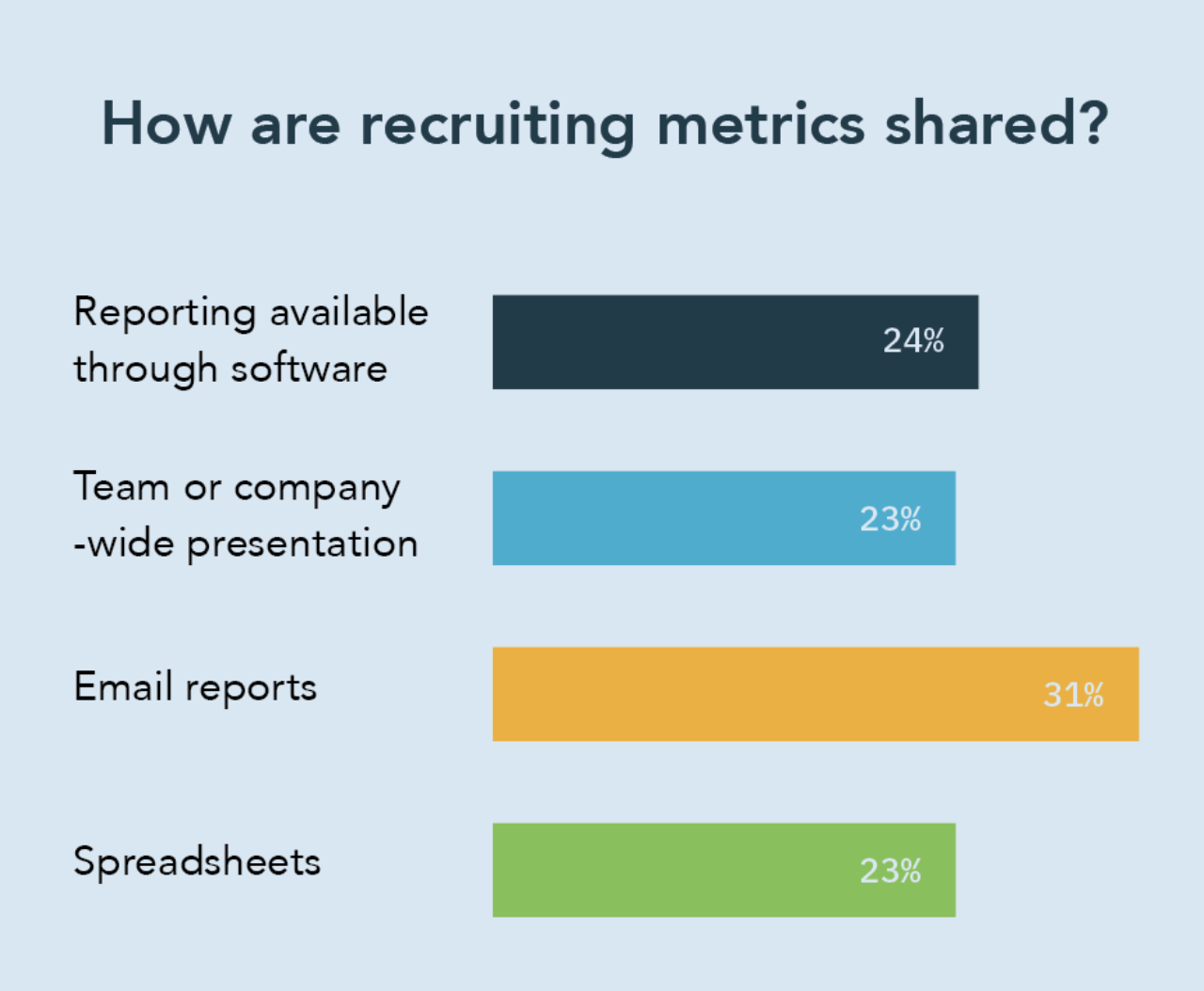
You need to come up with an effective way of sharing your recruiting metrics with your team. When you report them through software, your team members have access to real-time insights, which helps them work in an agile way.
9. Review and modify your process
Agile methodologies make it easier to modify your processes quickly if they aren’t working. So, after reviewing your results at the end of each sprint cycle, determine if there are any adjustments needed.
Look at what you learned as a team, what can be done better/faster/more efficiently, and incorporate your findings into the next sprint cycle. It’s also an excellent time to adjust your processes if recruitment deadlines/needs suddenly change.
Are you ready to adopt agile recruiting?
Done well, agile recruiting is a flexible, effective, and collaborative way of working. It doesn’t mean you have to follow all the agile methodology principles to the letter. Still, you can implement the ones that best suit your organization – such as using kanban boards or having regular standups.
No one says agile recruitment is the perfect solution to all recruitment challenges, nor is it about taking shortcuts.
That being said, recruiters still need to foster strong relationships with hiring managers and candidates alike, and agile recruitment is simply a more efficient method of achieving your recruitment goals.
How AI & recruitment technology is changing recruiting experience
Find out how tech has helped other companies grow by enhancing both the recruiters’ and candidates’ experience!

